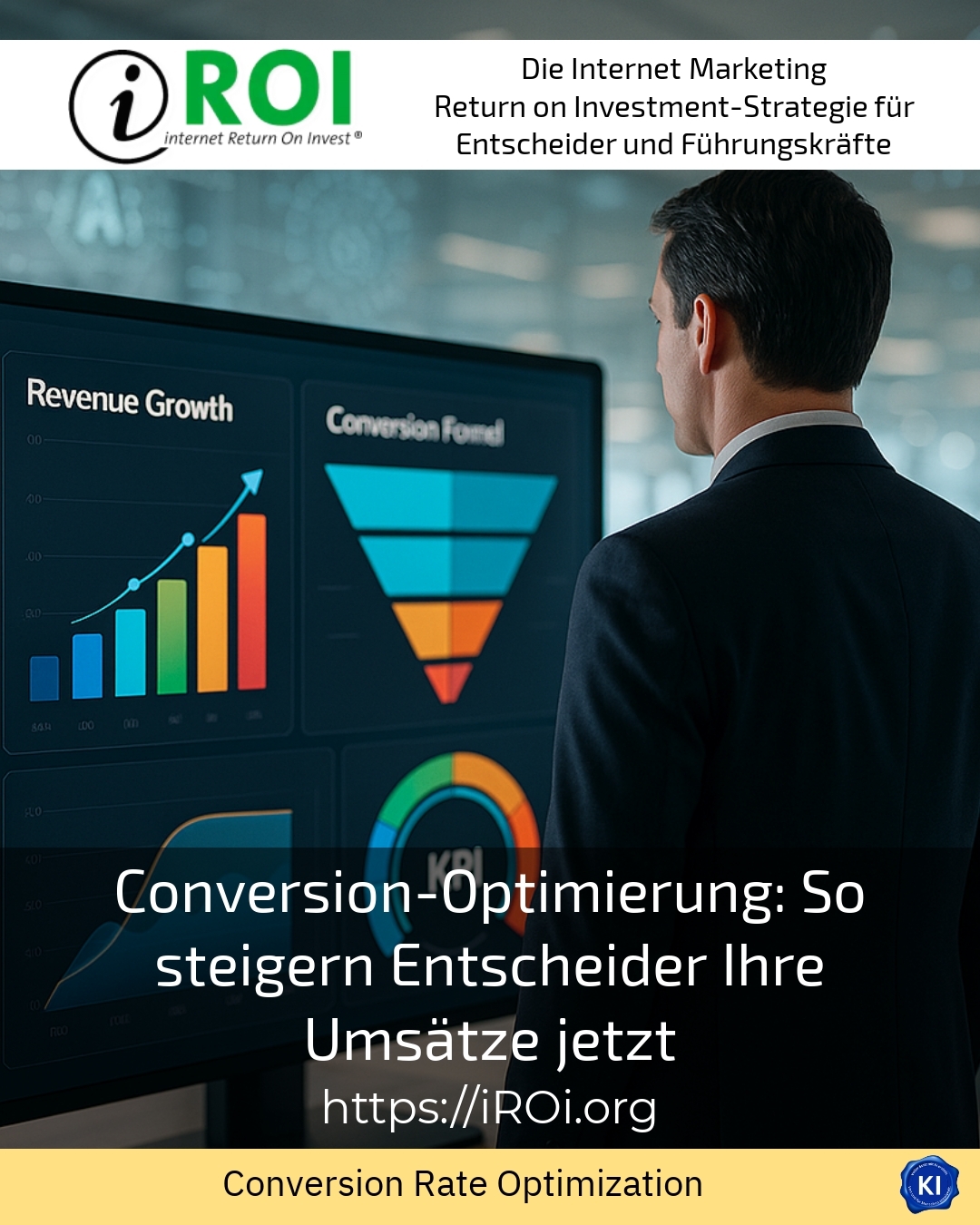Understanding and successfully applying conversion optimisation
Conversion optimisation is an essential process for decision-makers who want to sustainably increase their sales. It involves guiding visitors to a website in such a way that they carry out desired actions - such as completing a purchase, filling out a form or signing up for a newsletter. Companies from a wide range of industries use conversion optimisation to generate significantly more value from existing visitors and increase the efficiency of their online activities.
Typical questions that decision-makers come to us with often revolve around improving landing pages, increasing user-friendliness and the question of how to maximise impact with a small budget. In consulting, we view conversion optimisation as an accompanying process that provides practical impetus in projects and supports them with tried-and-tested methods.
The most important parameters for conversion optimisation
Successful conversion optimisation begins with the targeted improvement of landing pages. Decision-makers should ensure that their landing pages are clearly structured, focus on a single goal and contain a clear call to action (CTA). These CTAs must be eye-catching and easily accessible so that users are led directly to the desired action.
Another focus is on usability. Fast loading times, intuitive navigation and optimisation for mobile devices are essential. This means that users stay on the site longer and are less put off by technical hurdles. Adapting to mobile devices is particularly essential in sectors such as retail, financial services and tourism, as a large proportion of traffic is generated via smartphones.
Regular A/B tests are also recommended. By testing different variants of headlines, buttons or images, decision-makers gain valuable insights into which elements work best. This means that conversion optimisation is not a one-off project, but an ongoing task that is geared towards the needs of users.
Examples from practice
BEST PRACTICE at company XYZ (name changed due to NDA contract) Here, the colour and position of the buy button was changed through targeted A/B testing. This simple measure led to an 18 % higher conversion rate in the e-commerce segment within a few weeks. The tests were systematically implemented and provided precise data to validate or reject hypotheses.
BEST PRACTICE at ABC (name changed due to NDA contract) The company from the financial services sector improved the loading times of its website by compressing images and reducing unnecessary scripts. The resulting faster site impressed users and led to a 12 % higher completion rate for online applications.
BEST PRACTICE at DEF (name changed due to NDA contract) In the tourism sector, the introduction of a mobile-optimised booking route has significantly reduced the bounce rate for smartphone users. This increased the conversion rate by 22 %, primarily due to a clearer user journey and better visibility of the booking CTAs.
The role of SEO in conversion optimisation
Search engine optimisation and conversion optimisation are closely linked. Without the right visibility, hardly enough visitors will come to a website, but it is the optimisation of the user experience that ensures an increased conversion rate. Optimised content that is precisely tailored to the user's search intention provides important impetus for conversion optimisation.
The following applies: content should be of high quality and clearly understandable. It is not enough just to focus on keywords; the content must offer real added value and meet the user where they are - with personalised offers, useful information or confidence-building elements such as customer reviews.
A concise focus is also placed on the technical basis of websites: Loading speed, secure connections and a clean structure make it easier for both search engines and users to find their way around the site. If these requirements are met, companies often receive positive feedback from clients who report that the conversion rate has improved noticeably.
Practical examples of SEO-supported conversion optimisation
BEST PRACTICE at GHI (name changed due to NDA contract) The content of the company's website was comprehensively revised to better serve the search intentions of different target groups. Through precise keyword integration and comprehensible texts, the proportion of qualified leads that ultimately converted increased by 30 %.
BEST PRACTICE at JKL (name changed due to NDA contract) This company optimised the URL structure and ensured fast page loading times, both of which had a positive impact on rankings and user-friendliness. The result was higher conversion rates in both organic and paid traffic.
BEST PRACTICE at the company MNO (name changed due to NDA contract) The implementation of structured data improved the presentation in search results and significantly increased the click-through rate. Subsequently, the conversion rate increased as visitors were targeted more specifically thanks to better-prepared previews.
Implementing conversion optimisation projects with systematic support
Many decision-makers are aware of the importance of conversion optimisation, but are looking for the right support to implement their projects in a targeted manner. This is where transruptions coaching can provide valuable help by providing support based on experience, giving individual impulses and identifying the right levers through technical expertise.
In coaching, tailor-made strategies are developed, smart prioritisation is carried out and specific problem areas are worked on. It is not promised that problems will always be "solved", but that positive changes can often be initiated that contribute to a sustainable increase in sales.
Decision-makers benefit from a partner who knows the right methods for their industry and recognises how streams of visitors become real customers. At the same time, technical, content-related and psychological aspects are taken into account, which together make up the success of conversion optimisation.
Examples of coaching scenarios
BEST PRACTICE at the company PQR (name changed due to NDA contract) The use of coaching meant that the team was able to carry out A/B tests independently after a short time, generating valuable data for the continuous improvement of the online shop. The conversion rate increased by around 15 % over the course of the project.
BEST PRACTICE at STU (name changed due to NDA contract) As part of a coaching project, decision-makers were given impetus to better dovetail SEA campaigns and landing pages. Optimising the landing pages for relevant keywords resulted in a measurable increase in sales.
BEST PRACTICE at VWX (name changed due to NDA contract) Support in the design of a personalised user journey had a significant impact on user loyalty and sustainably increased the conversion rate, especially for returning customers.
My analysis
Conversion optimisation is a multifaceted and dynamic task that requires a holistic view of content, technology and user experience. Decision-makers should work systematically on landing pages, user guidance and SEO quality. Support from experienced coaches can accelerate success without raising unrealistic expectations. Especially in a competitive environment with constantly changing market conditions, the ability to test and adapt flexibly is becoming increasingly important. Companies from the retail, finance and tourism sectors show how successfully conversion optimisation can be implemented if it is approached with the right methods and a clear focus.
Further links from the text above:
[1] Top 10 Conversion Rate Optimisation Best Practices for 2025
[2] SEO & conversion rate optimisation are connected!
[4] Conversion Rate Optimisation: Best Practices for 2025 and Beyond
[5] Conversion optimisation explained quickly & simply
For more information and if you have any questions, please contact Contact us or read more blog posts on the topic TRANSRUPTION here.
















